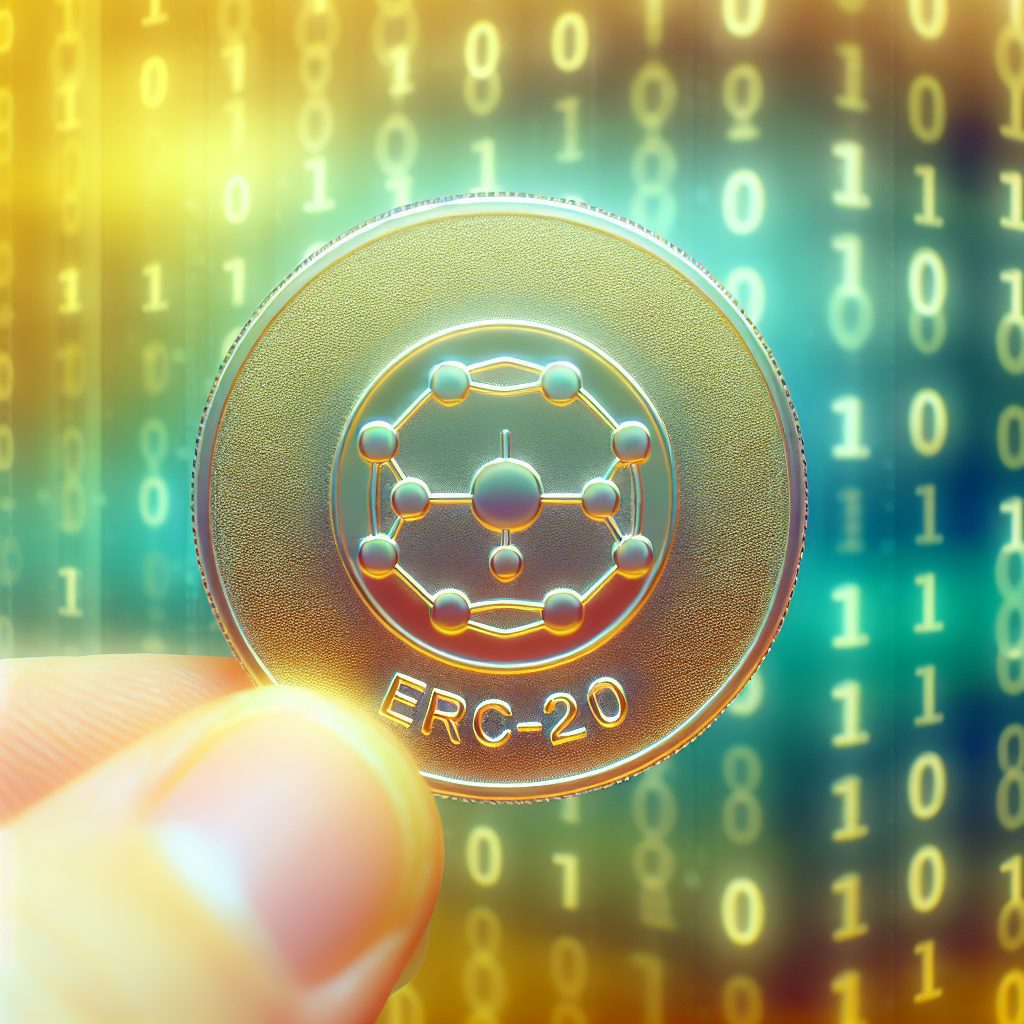Understanding Token Standards: A Deep Dive into ERC-20 and Beyond
The cryptocurrency landscape is vast and complex, with various standards governing how tokens are created, managed, and interacted with on blockchain networks. Among these standards, ERC-20 has emerged as one of the most significant, serving as a blueprint for creating fungible tokens on the Ethereum blockchain. This article delves into the intricacies of token standards like ERC-20, their importance, and their impact on the cryptocurrency ecosystem.
What Are Token Standards?
Token standards are sets of rules that define how tokens can be created, transferred, and managed on a blockchain. They ensure interoperability between different tokens and applications, allowing developers to build on existing frameworks without reinventing the wheel. Token standards are crucial for maintaining consistency and reliability in the blockchain space.
The ERC-20 Standard
The ERC-20 standard, proposed by Ethereum developer Fabian Vogelsteller in November 2015, outlines a common set of rules for fungible tokens on the Ethereum blockchain. This standard has become the foundation for most tokens issued on Ethereum, enabling seamless interaction between different tokens and decentralized applications (dApps).
Key Features of ERC-20
- Fungibility: Each token is identical and interchangeable with another token of the same type.
- Transferability: Tokens can be easily transferred between users.
- Approval Mechanism: Users can approve third parties to spend tokens on their behalf.
- Event Logging: The standard includes events that allow applications to listen for token transfers and approvals.
Core Functions of ERC-20
The ERC-20 standard defines six mandatory functions that every token must implement:
- totalSupply: Returns the total supply of the token.
- balanceOf: Returns the balance of a specific address.
- transfer: Transfers a specified amount of tokens to a given address.
- transferFrom: Allows a user to transfer tokens from one address to another, given prior approval.
- approve: Approves a third party to spend a specified amount of tokens on behalf of the token holder.
- allowance: Returns the amount of tokens that a spender is allowed to spend on behalf of the token holder.
Why ERC-20 Matters
The significance of the ERC-20 standard cannot be overstated. It has facilitated the creation of thousands of tokens, leading to the rise of Initial Coin Offerings (ICOs) and decentralized finance (DeFi) projects. Here are some reasons why ERC-20 is pivotal:
- Interoperability: ERC-20 tokens can be easily integrated into various wallets and exchanges, enhancing liquidity and accessibility.
- Developer Adoption: The simplicity and clarity of the ERC-20 standard have encouraged developers to create innovative applications and services.
- Market Growth: The proliferation of ERC-20 tokens has contributed to the overall growth of the cryptocurrency market, attracting investors and users alike.
Real-World Applications of ERC-20 Tokens
ERC-20 tokens have found applications across various sectors, from finance to gaming. Here are some notable examples:

1. Decentralized Finance (DeFi)
DeFi platforms like Uniswap and Aave utilize ERC-20 tokens to facilitate lending, borrowing, and trading without intermediaries. These platforms have revolutionized traditional finance by providing users with greater control over their assets.
2. Non-Fungible Tokens (NFTs)
While NFTs are typically associated with the ERC-721 standard, many projects use ERC-20 tokens for in-game currencies or governance tokens within NFT ecosystems. This integration allows for seamless transactions and interactions within these platforms.
3. Tokenized Assets
Real estate, art, and other physical assets can be tokenized using ERC-20 standards, enabling fractional ownership and easier transferability. Projects like RealT have successfully implemented this concept, allowing investors to buy shares in real estate properties.
Other Token Standards in the Cryptocurrency Space
While ERC-20 is the most well-known token standard, several others exist, each serving different purposes:
ERC-721: Non-Fungible Tokens
The ERC-721 standard is designed for non-fungible tokens (NFTs), which are unique and cannot be exchanged on a one-to-one basis. This standard has gained immense popularity in the art and gaming sectors, allowing for the creation of unique digital assets.
ERC-1155: Multi-Token Standard
The ERC-1155 standard allows for the creation of both fungible and non-fungible tokens within a single contract. This flexibility makes it ideal for gaming applications where both types of assets are needed.
BEP-20: Binance Smart Chain
The BEP-20 standard is similar to ERC-20 but is used on the Binance Smart Chain (BSC). It allows for the creation of tokens that can interact with the BSC ecosystem, which has gained popularity due to lower transaction fees and faster confirmation times compared to Ethereum.
Challenges and Limitations of ERC-20
Despite its widespread adoption, the ERC-20 standard is not without its challenges:
- Gas Fees: High transaction fees on the Ethereum network can deter users from making small transactions.
- Scalability: The Ethereum network has faced scalability issues, leading to congestion and slower transaction times during peak periods.
- Security Risks: Smart contract vulnerabilities can lead to significant losses, as seen in various hacks and exploits.
Future of Token Standards
The future of token standards is likely to evolve as the cryptocurrency landscape matures. Innovations such as layer-2 solutions and cross-chain interoperability are expected to address some of the current limitations. Additionally, new standards may emerge to cater to specific use cases, further enhancing the versatility of blockchain technology.
FAQs
What is the difference between ERC-20 and ERC-721?
ERC-20 tokens are fungible, meaning each token is identical and interchangeable. In contrast, ERC-721 tokens are non-fungible, representing unique assets that cannot be exchanged on a one-to-one basis.
Can ERC-20 tokens be used on other blockchains?
While ERC-20 tokens are primarily designed for the Ethereum blockchain, some projects have developed bridges or wrapped versions that allow ERC-20 tokens to be used on other blockchains, such as Binance Smart Chain or Polygon.
How do I create an ERC-20 token?
Creating an ERC-20 token involves writing a smart contract that adheres to the ERC-20 standard. Developers can use various tools and platforms, such as Remix or Truffle, to deploy their tokens on the Ethereum network.
What are gas fees, and how do they affect ERC-20 transactions?
Gas fees are transaction fees paid to miners for processing transactions on the Ethereum network. High gas fees can make small transactions uneconomical, impacting the usability of ERC-20 tokens.
Conclusion
Token standards like ERC-20 play a crucial role in the cryptocurrency ecosystem, enabling the creation and management of tokens that drive innovation across various sectors. Understanding these standards is essential for anyone looking to navigate the complex world of blockchain technology. As the industry continues to evolve, staying informed about new developments and standards will be key to leveraging the full potential of cryptocurrencies.
For the latest news and updates in the cryptocurrency space, consider visiting Bitrabo. You can also follow me on social media for more insights: X, Instagram, and Threads.
Disclaimer: This article is for informational purposes only and should not be considered financial advice. Always conduct your own research before investing in cryptocurrencies.
The Crypto Watchlist of the Week 🔎
Subscribe to receive expert-curated projects with real potential—plus trends, risks, and insights that matter. Get handpicked crypto projects, deep analysis & market updates delivered to you.


